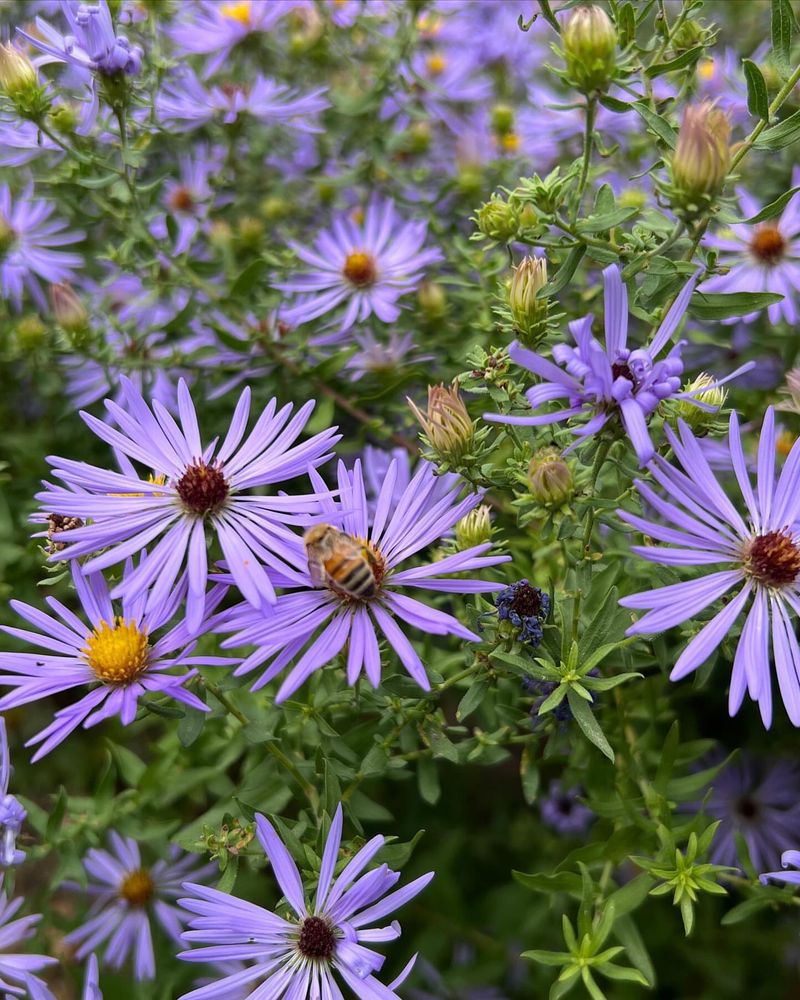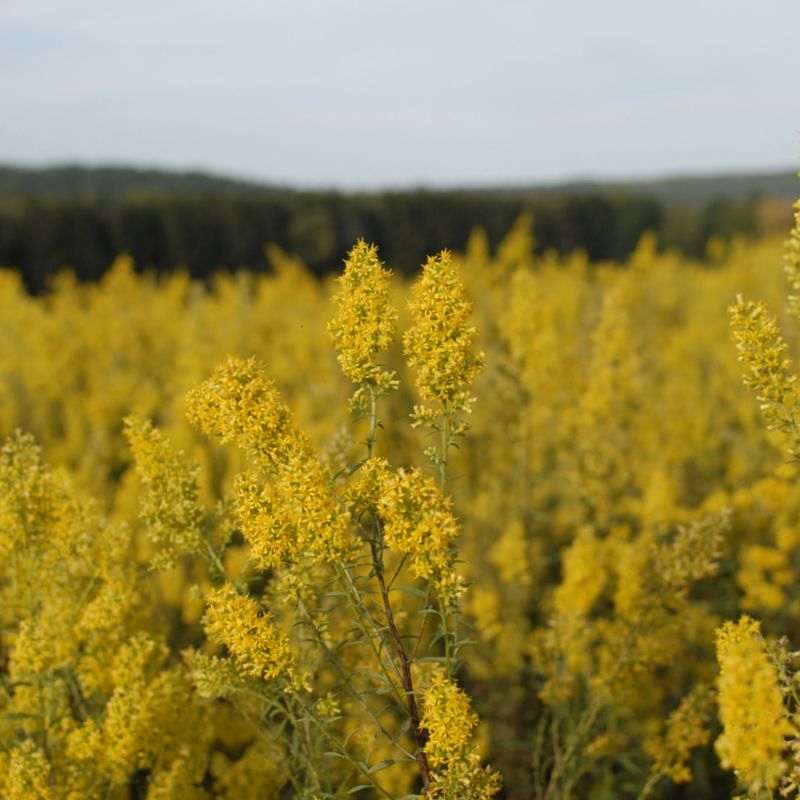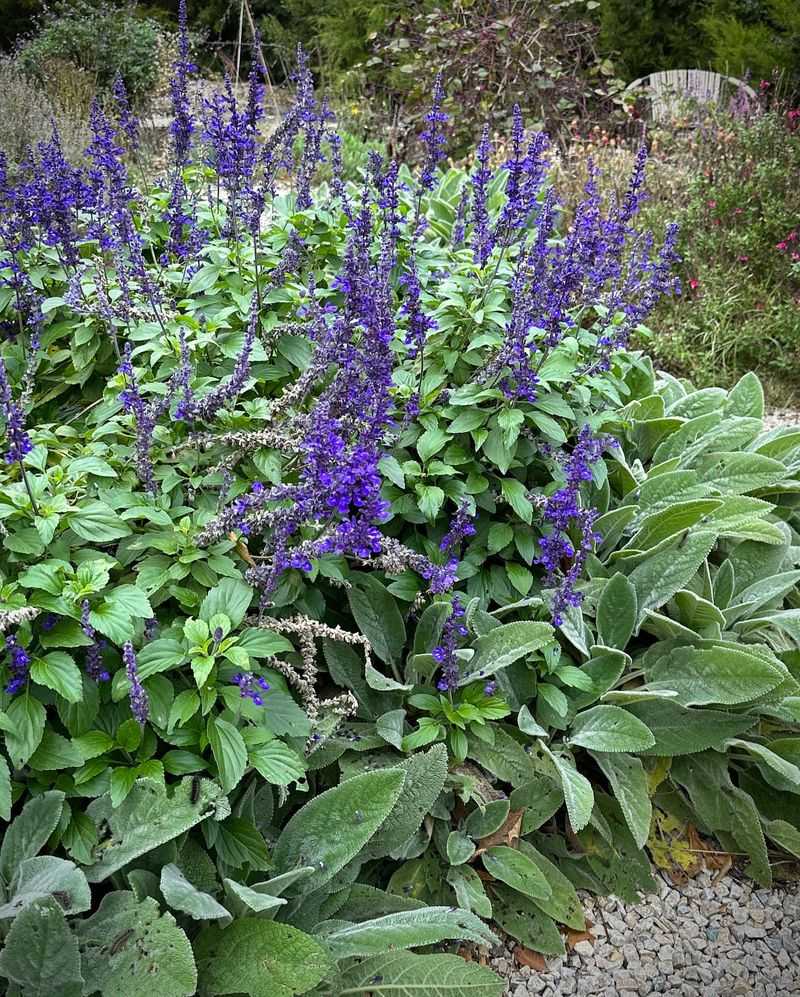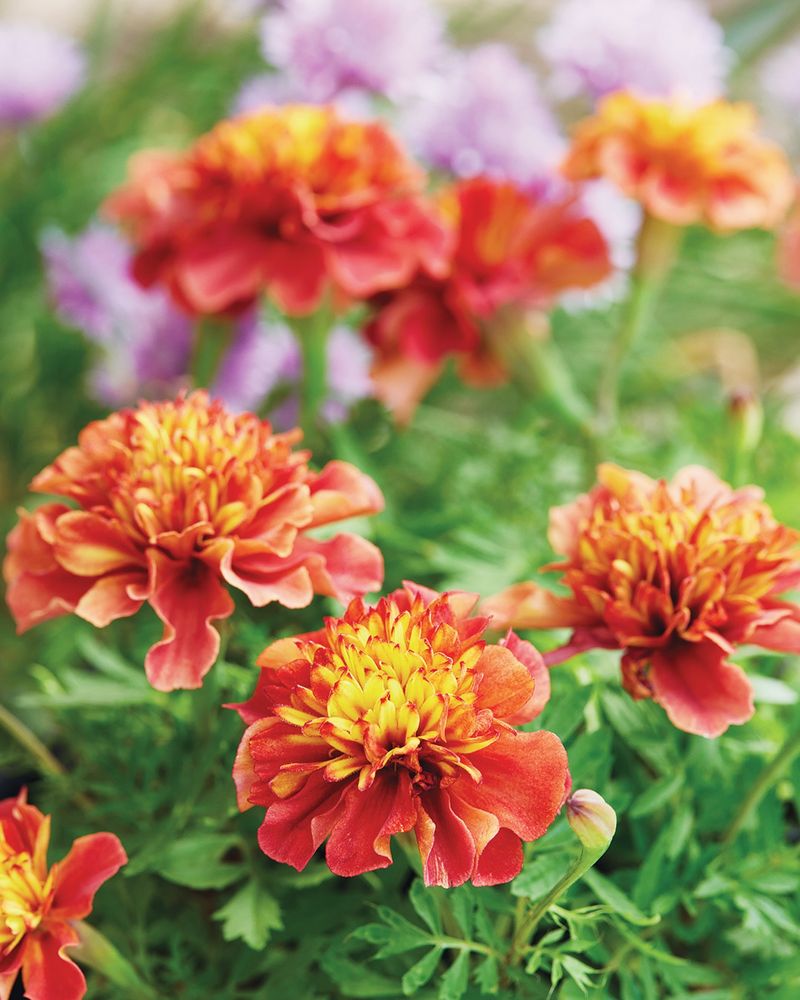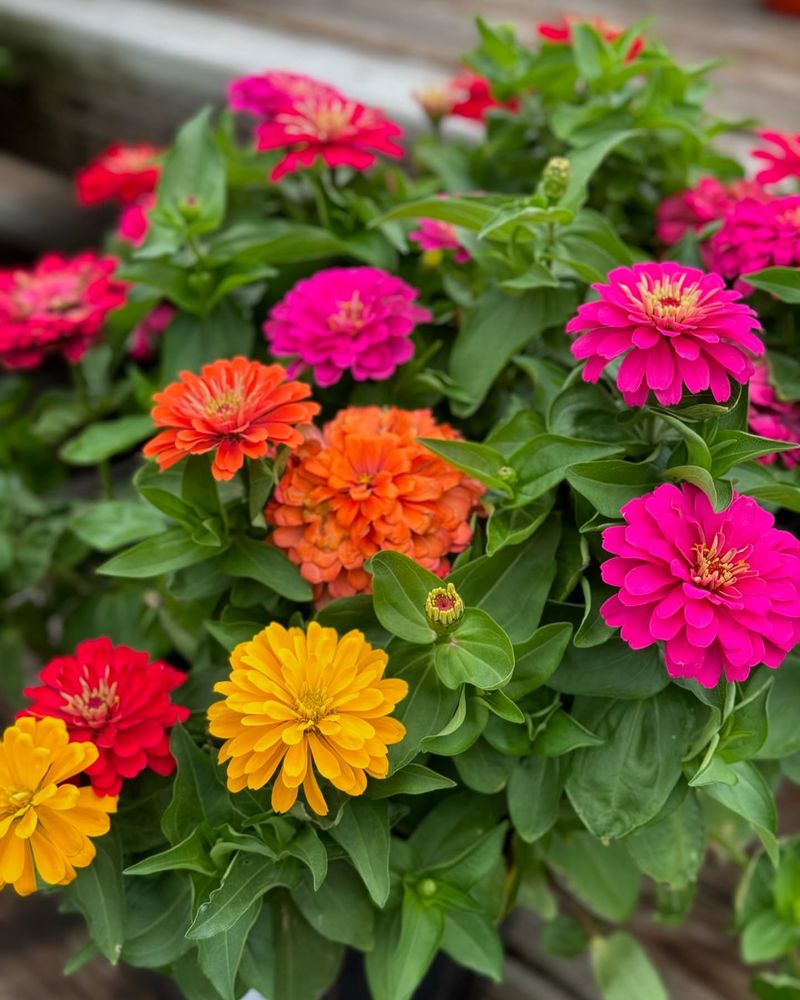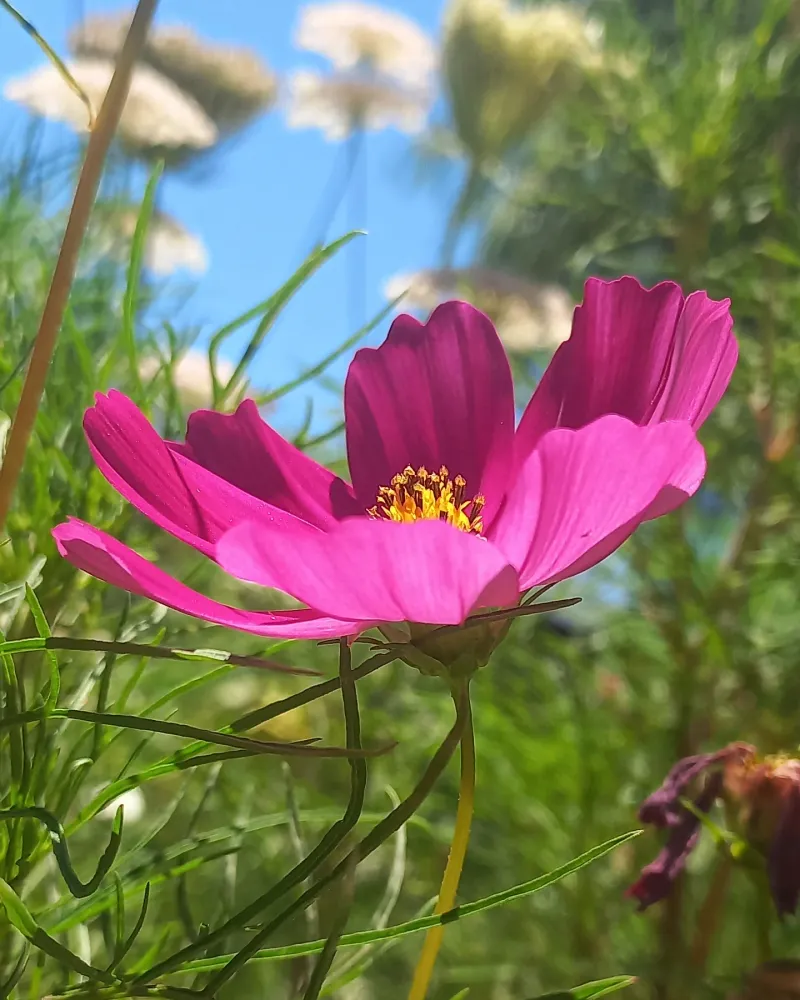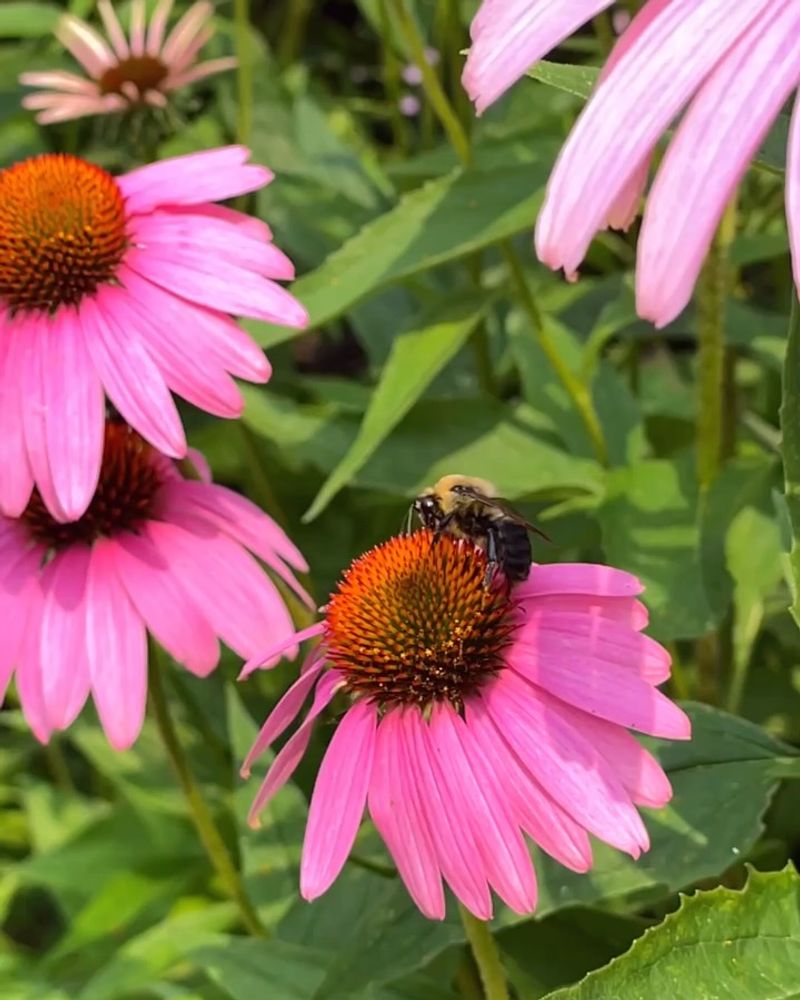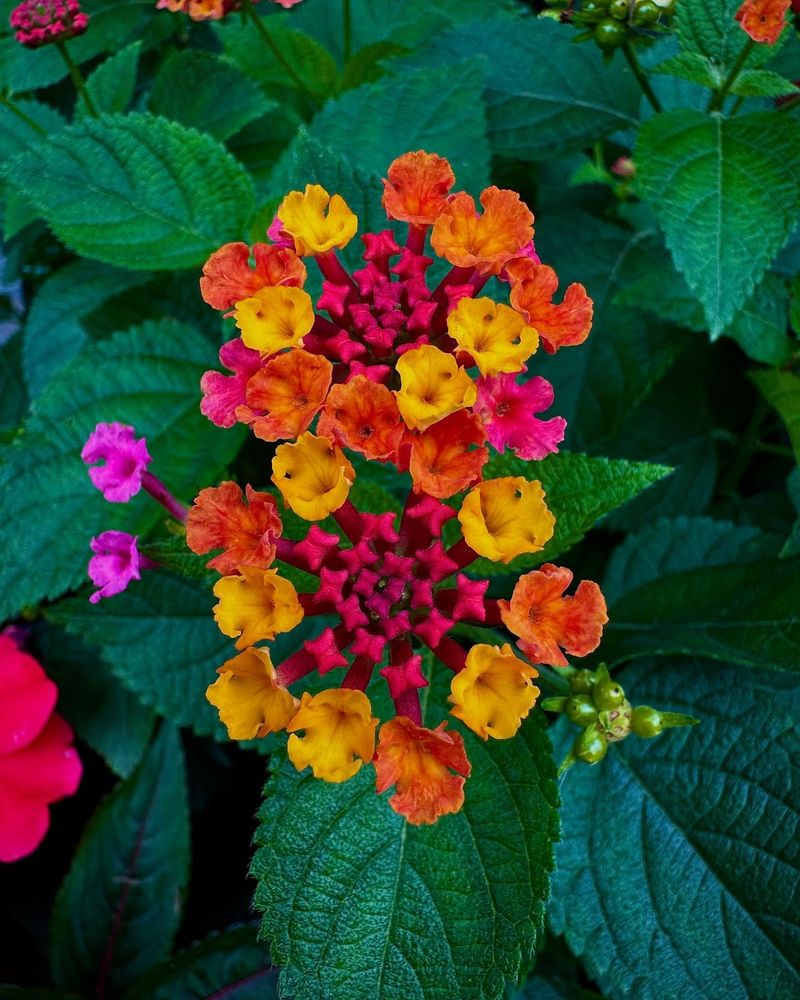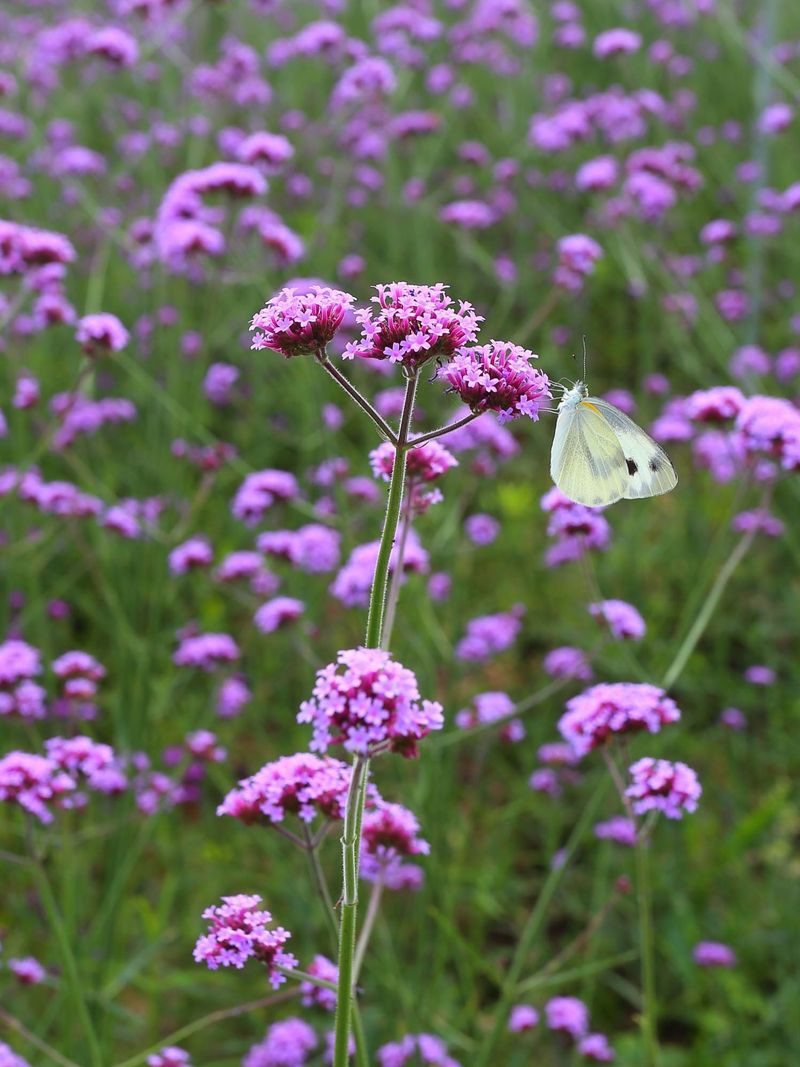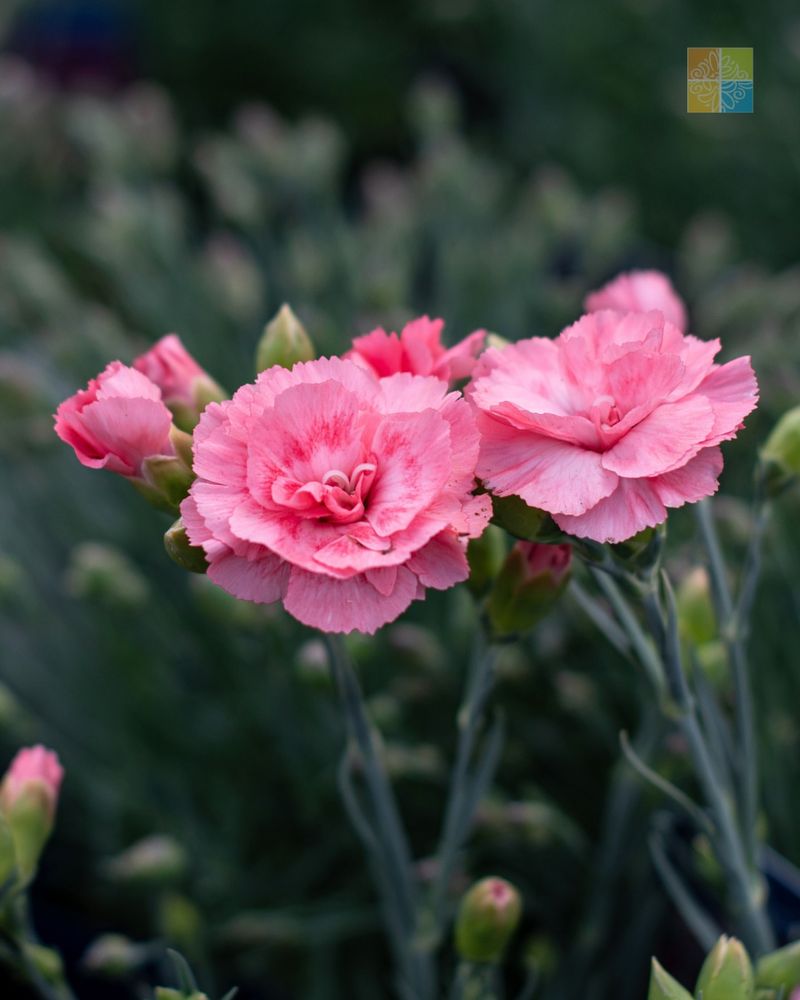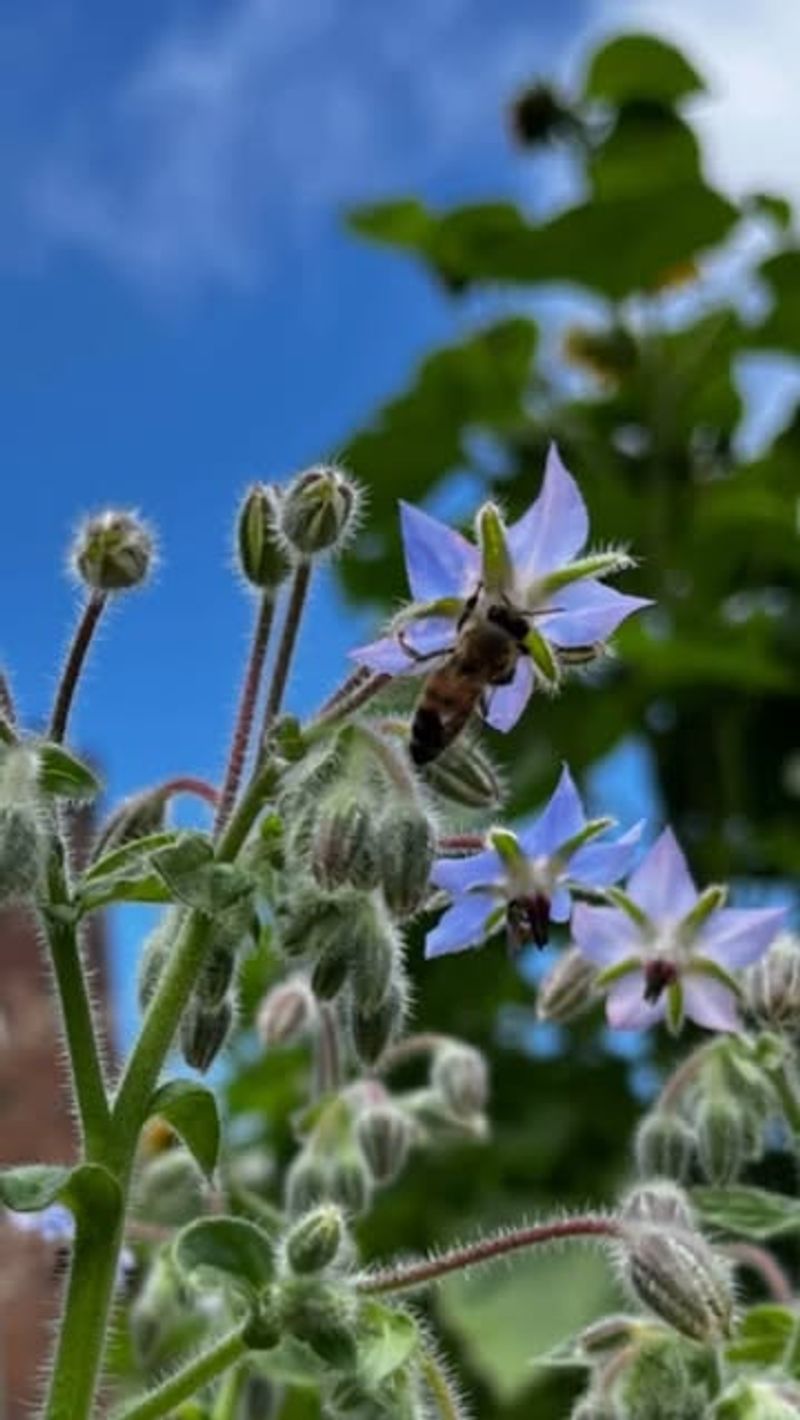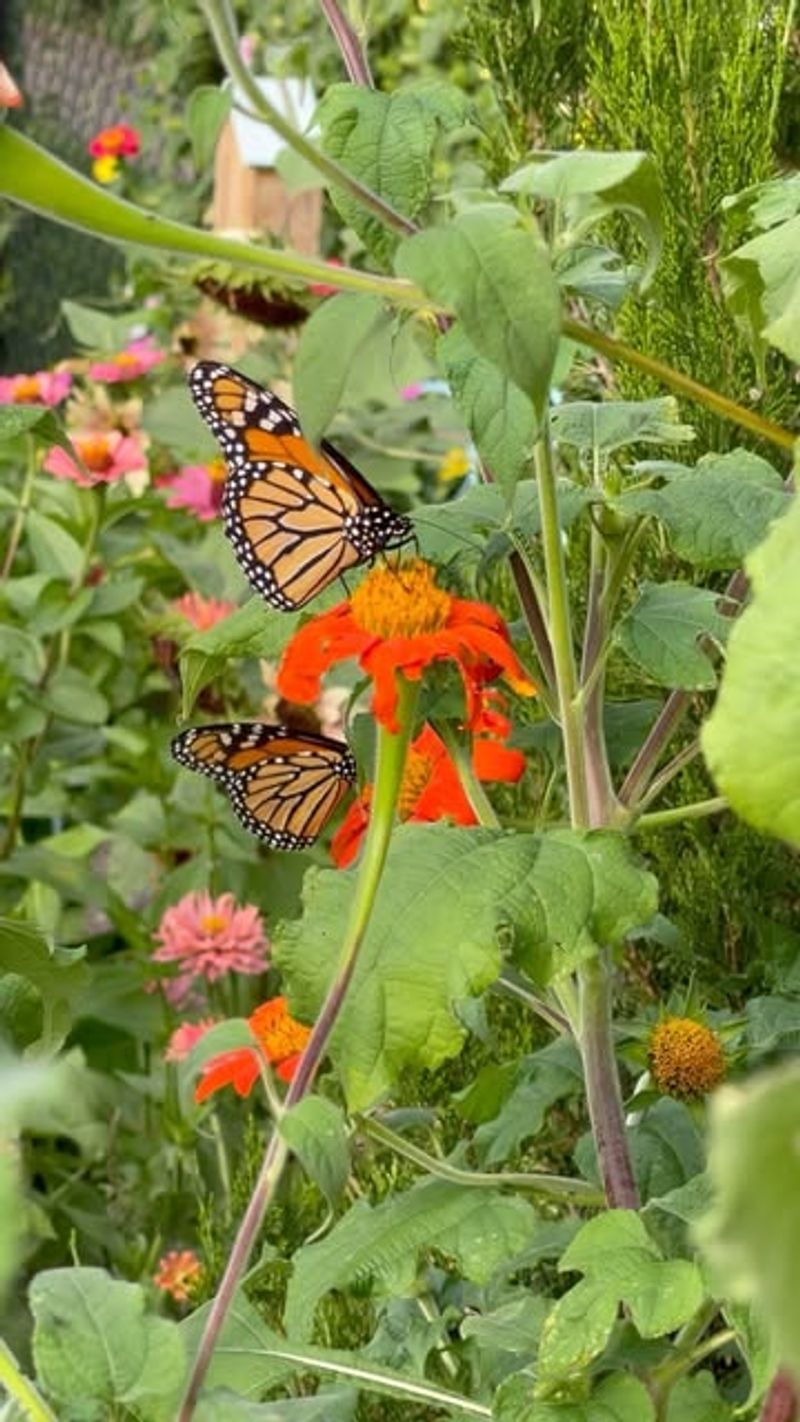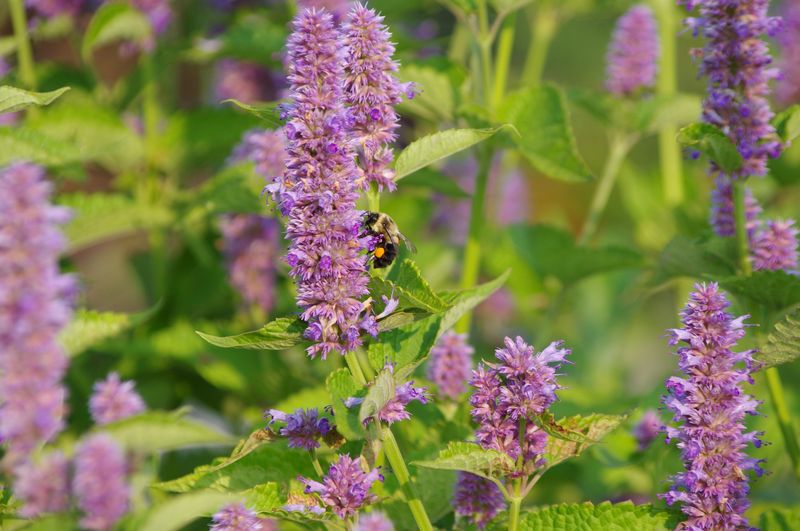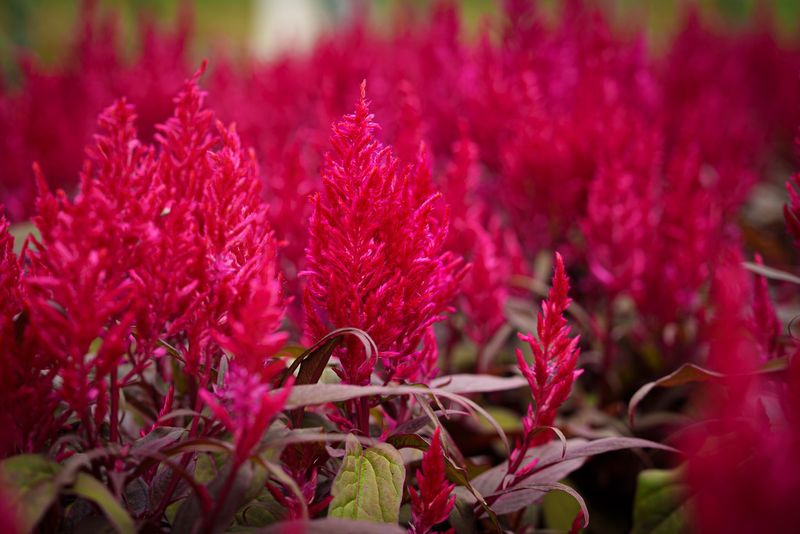Georgia gardeners, this week is prime time to help our late-season pollinators thrive. By planting the right flowers now, you can offer bees, butterflies, and other pollinators the food they need as the season winds down.
These plants not only brighten your garden but also play a vital role in supporting local wildlife. It’s a simple way to make a big difference in your backyard.
Let’s get planting and give those hardworking pollinators a tasty boost!
1. Aster
Late-blooming stars of the garden provide crucial nectar when other flowers have faded. Georgia gardeners love how these daisy-like blooms attract butterflies and bees well into autumn.
Plant them in sunny spots with well-draining soil for best results. Their purple, pink, and white blooms create a colorful display while offering vital support to pollinators preparing for winter.
2. Goldenrod
Often mistakenly blamed for allergies, this native powerhouse actually doesn’t cause hay fever at all. The bright yellow blooms light up Georgia landscapes while providing essential late-season nectar for countless pollinators.
Solidago species thrive in our state’s varied conditions and require minimal care. Plant them now for spectacular autumn color and to witness the amazing diversity of beneficial insects they attract.
3. Sedum
Succulent foliage and star-shaped flower clusters make this plant both beautiful and beneficial. The flat-topped blooms provide perfect landing pads for butterflies across Georgia gardens from late summer through fall.
Requiring little water once established, sedum thrives in our state’s hot conditions. ‘Autumn Joy’ is a popular variety that lives up to its name by bringing both joy and essential resources to pollinators.
4. Salvia
Tubular flowers in shades of blue, purple, and red attract hummingbirds making their way through Georgia during fall migration. These aromatic perennials bloom abundantly until frost, providing reliable nectar sources.
Many native salvias thrive in our state’s challenging conditions. Plant them in sunny spots now, and you’ll be rewarded with weeks of pollinator activity as these beneficial creatures prepare for the changing seasons.
5. Marigold
Quick-growing annuals provide instant color and attract numerous beneficial insects to Georgia gardens. Their distinctive scent may deter some garden pests while their bright blooms welcome pollinators like bees and butterflies.
Sow seeds directly now for a fast autumn display. These hardy flowers continue blooming through our state’s mild fall weather, providing vital resources when many other plants have finished their seasonal show.
6. Zinnia
Vibrant blooms in countless colors create a pollinator paradise in Georgia gardens. These easy-growing annuals attract butterflies, bees, and hummingbirds with their nectar-rich centers and convenient landing pads.
Plant seeds now for quick results in our state’s warm fall soil. Deadhead spent blooms to encourage continuous flowering until frost, maximizing the benefits for both your garden’s appearance and its pollinator population.
7. Cosmos
Feathery foliage and daisy-like blooms dance above Georgia gardens on slender stems. These pollinator magnets self-seed readily, creating sustainable habitat year after year once established in your landscape.
Sow seeds directly now for fall flowers in our state’s mild climate. Their open centers provide easy access to pollen and nectar, making them perfect refueling stations for beneficial insects preparing for winter.
8. Sunflower
Late-blooming varieties provide both beauty and bounty for Georgia’s wildlife. Beyond their cheerful appearance, these giants offer protein-rich seeds for birds and abundant pollen for bees in the critical weeks before winter.
Plant quick-maturing varieties now in our state’s warm soil. ‘Autumn Beauty’ and ‘Italian White’ are excellent choices that will flower before frost while supporting diverse pollinator populations in your garden.
9. Coneflower
Native echinacea continues blooming well into fall, providing essential resources for Georgia’s pollinators. The distinctive raised centers offer convenient landing pads where bees and butterflies can gather nectar and pollen.
These drought-tolerant perennials thrive in our state’s varied conditions. Plant them now to enjoy their colorful display this fall, and leave the seedheads standing through winter to provide food for birds.
10. Lantana
Clusters of tiny, tubular flowers create colorful landing pads that butterflies find irresistible. In Georgia’s mild climate, these heat-loving perennials often bloom until the first hard frost, providing vital late-season nectar.
Many varieties thrive in our state’s hot conditions with minimal care. The multicolored blooms change hues as they age, creating a kaleidoscope effect that’s as beautiful to humans as it is beneficial to pollinators.
11. Verbena
Low-growing clusters of tiny blooms create a carpet of color that attracts numerous butterfly species. Georgia gardeners appreciate how these hardy plants continue flowering through our mild fall weather, supporting pollinators until frost.
Plant them in sunny spots with good drainage for best results. Their spreading habit makes them perfect for borders, containers, or as colorful groundcovers in pollinator gardens across our state.
12. Dianthus
Spicy-scented blooms in shades of pink, red, and white attract bees and butterflies to Georgia gardens. Many varieties rebloom enthusiastically in fall’s cooler temperatures after a summer rest period.
Plant them now in well-draining soil across our state. Their compact size makes them perfect for containers, borders, or rock gardens while their fragrance and nectar-rich blooms support pollinators preparing for winter.
13. Borage
Star-shaped blue flowers hang in clusters, providing nectar-rich havens for bees throughout fall. Georgia gardeners can plant this herb now for quick results, as it grows rapidly and blooms within weeks.
The cucumber-flavored leaves are edible, making this plant doubly useful in our state’s gardens. Borage self-seeds readily, creating sustainable habitat that returns year after year to support your local pollinator population.
14. Tithonia
Mexican sunflower stands tall with vibrant orange blooms that monarch butterflies find irresistible during fall migration through Georgia. The velvety leaves and nectar-rich flowers create perfect refueling stations for these important pollinators.
Plant seeds now in our state’s warm soil for quick growth. These impressive annuals reach 4-6 feet tall and bloom until frost, creating dramatic vertical interest while supporting numerous beneficial insects.
15. Anise Hyssop
Licorice-scented foliage and purple flower spikes attract bees, butterflies, and hummingbirds to Georgia gardens. This native perennial continues blooming well into fall, providing crucial late-season nectar for pollinators preparing for winter.
Plant it now in sunny spots across our state. The edible leaves and flowers can be used for tea, while the sturdy stems stand strong through autumn, supporting beneficial insects until frost.
16. Celosia
Flame-like plumes or crested blooms in vibrant colors add dramatic flair while supporting pollinators. Georgia gardeners can plant these heat-loving annuals now for continuous color until frost, when many other flowers have faded.
Their unusual flower structure provides both pollen and nectar to beneficial insects across our state. The dried blooms maintain their color for months, extending their ornamental value even after the growing season ends.
17. Helenium
Daisy-like blooms with raised centers create perfect landing pads for pollinators well into fall. Georgia gardeners know these native perennials as “sneezeweed,” though they don’t actually cause allergies.
The red, orange, and yellow flowers brighten our state’s gardens when many other plants have finished blooming. Plant them now in moist, rich soil to support bees and butterflies during the critical pre-winter feeding period.


